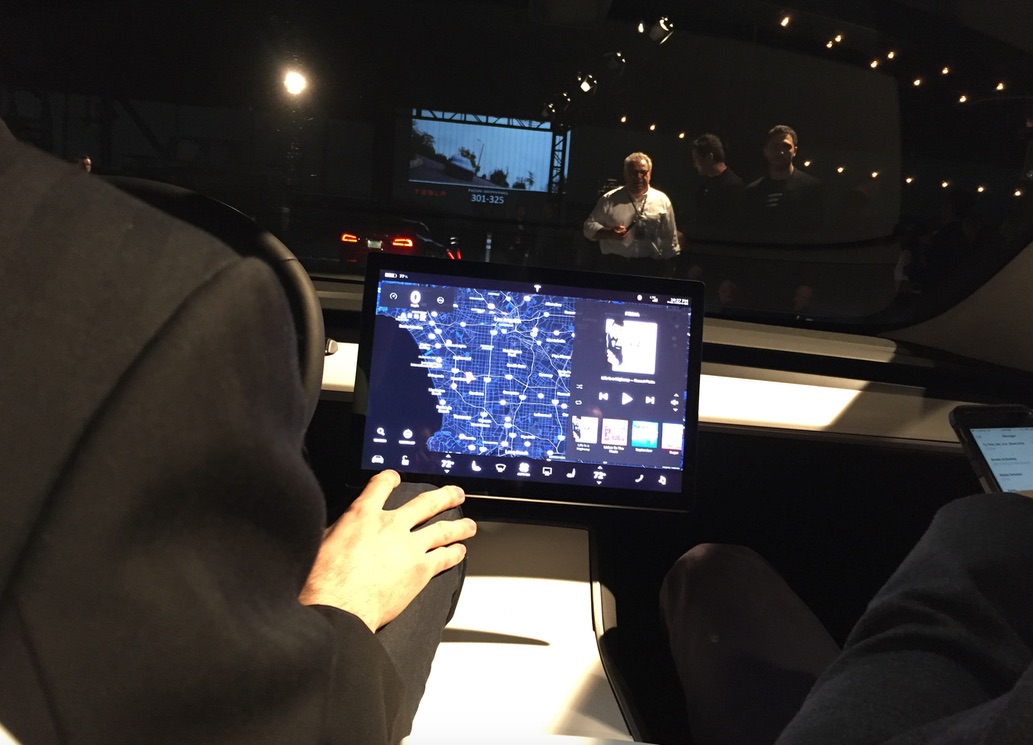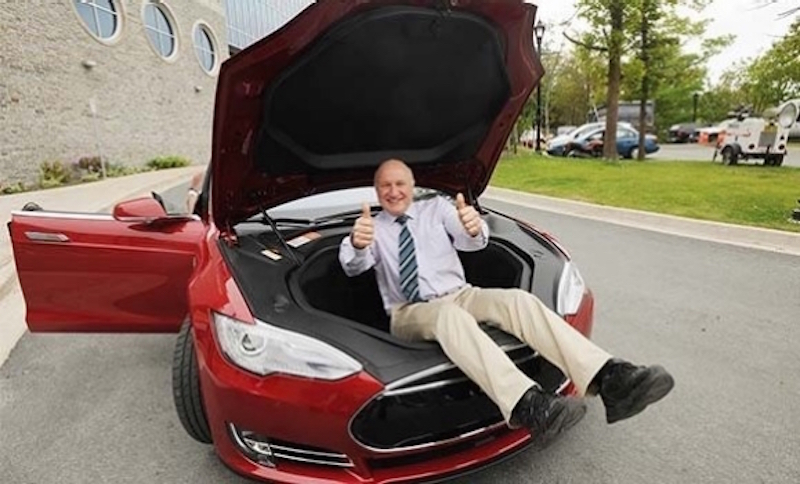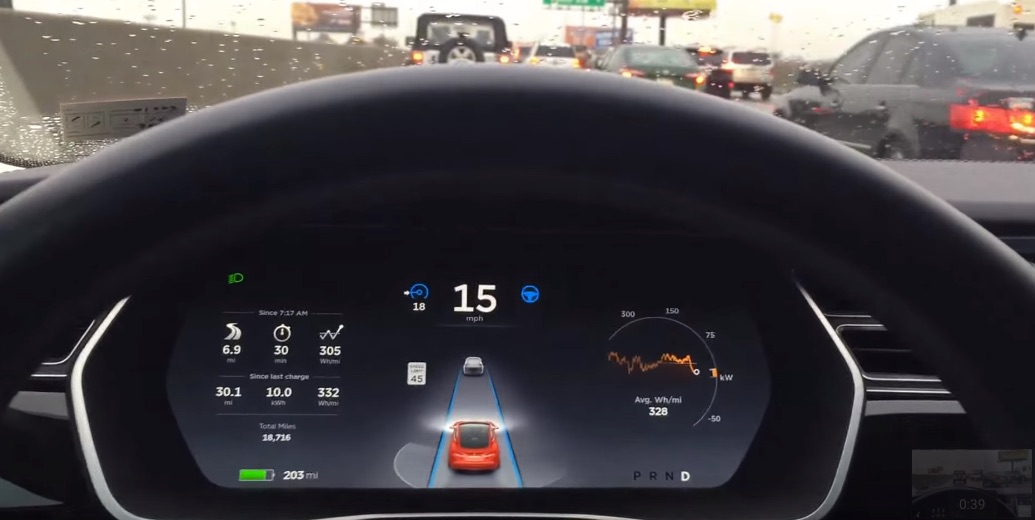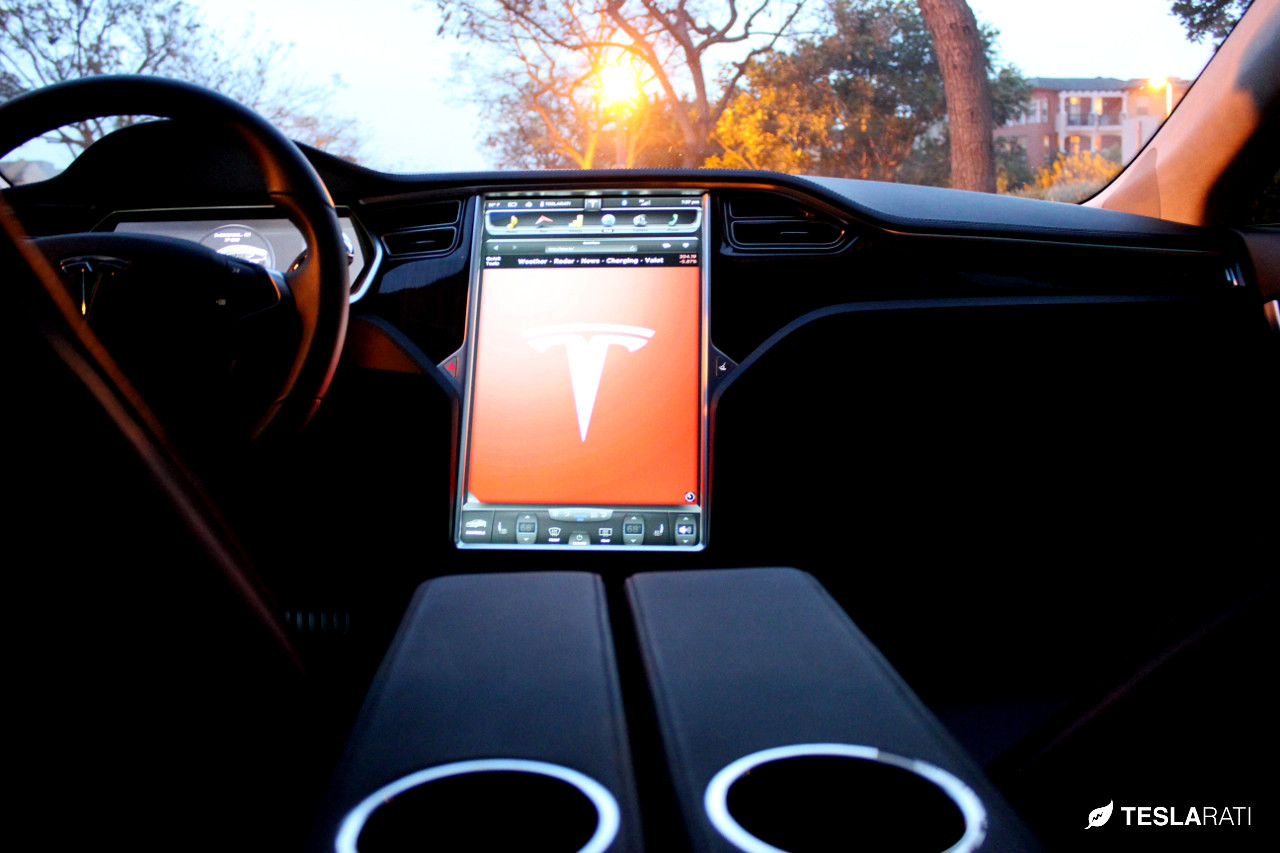News
Tesla ride-sharing program: exploring its practicality and real world benefits
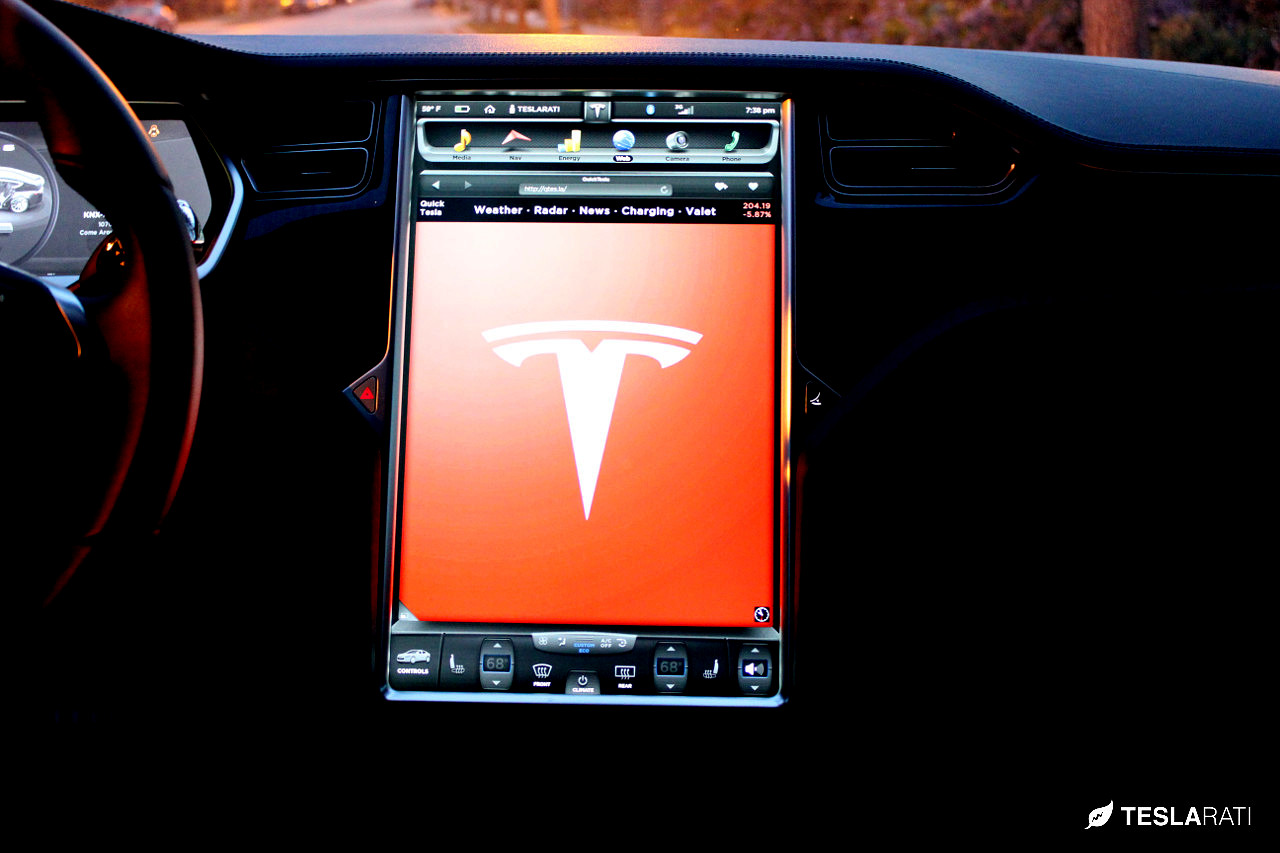
Many of the Tesla faithful sat with bated breaths waiting for the Master Plan Part 2 to be published. Once it did, we devoured every word, with some words more surprising than others. Making a pickup truck, while not surprising is thought-provoking. Ride-sharing as a concept, also not very surprising. Ride-sharing using the autonomously driven car that you personally own? Now there’s something to think about.
“In cities where demand exceeds the supply of customer-owned cars, Tesla will operate its own fleet, ensuring you can always hail a ride from us no matter where you are.” – Elon Musk
Let’s consider for a moment what this might look like.
Practicality
My initial thought of an autonomous Tesla was ride-sharing within the same household. My spouse and I have jobs that are in opposite directions, but we also work different hours with him having the far shorter commute. That being said, it would technically be feasible for a car to drop me off at work and make it back home just in time to take him. Then, it would have plenty of time to come back to me before my work day is done. Driving me home would also be tight – but I think the car would make it just in time to drop me off and go grab him. (Anyone else getting wide-eyed at the thought of a car driving you around? I sure am!) The only downside that I can think of is that both of us, at times, like to run errands on a lunch break. Surely with a little planning we could just schedule who will have the car available mid day. For example, on his day the car wouldn’t come back to get me until later in the day. Should I need to use it, it could come back to me earlier. All of this sounds technically feasible but the miles would add up quickly. Over 90 miles a day, to be exact; double what we currently drive combined. This may be obvious, since the car is making each round trip twice, but on paper that distance really hits home. As for cost, our electricity use at home would clearly go up. What would go down, however, is the cost associated with having a second car. I only estimate that the Tesla costs us $50/month to power now but even if it went up to $150, that delta is far less than the savings associated with not having a second car to insure and maintain. (Let alone pay to own/lease, depending on how expensive a car you’d be giving up.)
In this regard, I see practicality as a wash. If technically feasible with your schedule as it would be with ours, it may work. Getting past the mental barrier of having only one car between two adults who drive and work full time however, may be a challenge. Tesla has shifted thinking in many ways already, so it’s possible this will as well. I keep trying to think of reasons why we need two cars but aside from our daily jobs, which a car that can drive us to negates, all I’m coming up with is the rare occasion where we both need to go somewhere different at the same time. Truth be told, I’m sure even that could be worked out in most cases. In those where it can’t? Summon up another autonomous Tesla to drive you where you need to be. Again, this comes with a cost but again, it pales in comparison to the cost to own a second car that spends over 90% of its life parked anyway.
Public Domain
Most Tesla owners I know treat their cars with extreme care. I am no exception. The thought of a stranger taking up residence in my car without me sends shivers down my spine. I guess there is only so much damage a person could do sitting in the back seat being chauffeured, presumably while staring down at their smart phone to pass the time. The after 2am crowd, on the other hand, poses additional risks but I for one wouldn’t send my car out that late. A sick passenger is one danger, sharing the road with impaired drivers in (gasp!) manual driving mode is another. How do you specify who is eligible for pick up anyway? Imagine the headline “Tesla picks up prison escapee and drives it across the state line.” Add in your fear here (underage runaway, woman in labor, very sweaty marathon runner.)
Availability
This is the main point I’ve heard brought up in my quick chats about this topic. How do you schedule your car to go off and pick people up within a strict window until you need it again? How does traffic play a part? Do you wait until you’re home for the evening and send it out, knowing full well it’ll definitely make it home by the next morning? Or do you risk letting it take a 4pm pickup when doing so could leave you stranded at the office? How far would you let your car go anyway? What about charge? You might need a certain range to get home so can you restrict your car’s pickup jobs to a certain distance? What if it’s cold outside?
In this regard, I have a lot more questions than answers. I have no interest in my car being late to bring me to or from work. It’s my car after all. I have even less interest in being picked up without enough range to get me where I’m going. I live in a major city and I don’t expect to see a Supercharger within our limits any time soon. There are now chargers within 100 miles of me in all major directions, which very easily enables long distance travel as intended. I’m happy with this, as I certainly don’t find myself needing a fast charge close to home. If I plan on letting my car work all day however, that may change. Letting it go home and plug in is impractical at the current rate of my charging setup. 29 miles per hour doesn’t speak well to quick turnaround.
Cost
All of the questions above can be overlooked for a price. The big question is what that price might be. In my own life, I wouldn’t entertain the idea if it made me $100 per month. If it made me $1,000, I’d be the first in line to sign up. Everyone has a different sensitivity to price but I’d be willing to bet that even the least price sensitive people would at least consider using their Tesla in this way if the resulting income matched or exceeded their car payment. Getting to own and drive what I consider the world’s best car for no monthly payment is an offer that’d be too hard to refuse.
Those were just arbitrary numbers though. What might be realistic? I’d like to think that tomorrow’s Tesla is comparable to today’s Uber Black. My Uber app only gives prices for Uber X but I know that Black costs more. At this very moment, a quick ride from my work place to the very center of our downtown is $12 on Uber X. Let’s estimate that it would be $20 for Black. In fact, let’s assume the average ride would net $20. The car would certainly be smart enough to try to do another pickup on the way back to me so I can probably count on $40 as a “round trip” made during my work day. If I let the car drive two round trips on Friday and Saturday nights as well as one each work day, that bring us up to 9 round trips per week, or $360. Already, this isn’t sounding so bad. Let’s scale that down due to some Tesla profit and market saturation. It still seems very reasonable that with little time commitment, $200 per week is reasonable. We’re at $860 per month. If you, like me, go out into a city once or twice a month yourself and spend anywhere from $10-30 in parking or cab rides, you could be earning/saving a combined $900 each month. I suppose I just learned that yes, I’d probably consider letting my car go out and work for me. Even at half the dollars I’m picturing, a Model 3 payment would be covered.
Convenience
Airports. Nights out drinking. Events out of town that force a one night hotel stay. Finding parking in crowded places. Paying for parking at concert or sports venues. These are some of the most popular reasons people today might use ride sharing services even if they have a car. It would sure be convenient if your own car could handle these occasions for you. This, I know, has more to do with autonomy than making the decision to allow your car to work for you. But it’s only a small leap from one to the other. I say this because if my car dropped me off at an Eagles game, I wouldn’t want it paying for parking while it waits. I’d want it headed back home, because that’s a safe place for it to wait. But if it’s going to driving alone anyway, why not pick someone up? It’ll be an exceptionally convenient life when cars can drive for us.
Implementation
How might a program like this actually work? Given a very elementary level of consideration, I imagine the same way Uber works now. I picture a beautiful and streamlined app interface on your smart phone that allows you to log in when you want the car to be able to drive. I imagine the ability to draw a border around the distance you’re willing to let your car travel, as well as the ability to set a time that the car has to return by. Many people far smarter than I will program fantastic algorithms that only allow the car to accept rides that, given traffic and other factors, will get the car back within its allowable time window. I also picture the ability to send the car out with a child’s car seat, if summoned. That would require a bit of interaction, as the app would have to notify you to install it first unless you leave one installed. Speaking of app, I imagine it would notify you that it’s about to head out. (“Mom! I’m going out for a bit. Be back in an hour!”)
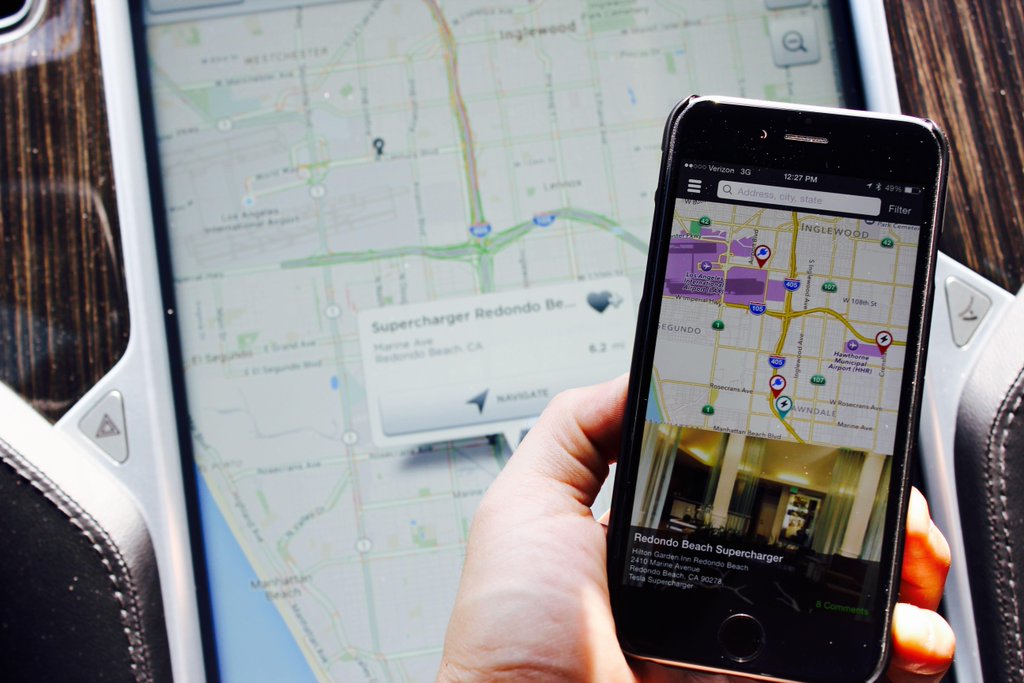
Supercharger map with crowdsourced recommendations from Tesla owners
Challenges
Much like I expect to be challenging for vehicle autonomy in general, the regulatory nightmare that is a driver-less vehicle will be the biggest hurdle to jump, in my humble opinion. Those aforementioned people way smarter than I? They’ll figure out programming the self driving technology sooner than later. They’ve already done a lot. Those perhaps-not-as-smart people we elect to office? Those folks I’m not too confidant in. Well, not them per say. The big jumbled mess of a political system that in the United States and so many other places churns out rules based on the almighty dollar rather than the good of citizens. Right here in my own home town, Uber is technically not legal. It’s legal in the state, just not the city, which has a cluster of a Parking Authority that somehow controls taxis. Except, by the way, when the Democratic National Convention came to town around the same time our local train system was having problems. Then the city made a special exception to “let” Uber operate. (Spoiler alert: it operates anyway.) My point is to illustrate that all the engineering and data in the world won’t guarantee that Tesla will even be allowed to operate driver-less ride sharing services as quickly as the technology itself will be available. That to me, is challenge numero uno.
The technology itself though, still has a lot of work ahead. Just like any parent tells their teenage driver “It’s not you, it’s the other cars on the road I’m worried about.” A Tesla can be a flawless driver 100% of the time on empty roads and that still won’t even come close to accurately predicting how it will drive when sharing the roads with distracted drivers, well-meaning drivers in poor weather conditions, and anything in between. Temporary lane restrictions are hard to compute, as is seeing a car that you just know is going to make a move without a signal. Years of driving experience allows people to read another car’s “body language” so to speak. Will a car ever be able to do the same?
An extension on the both of the topics above, I can only imagine the bureaucratic and technological nightmare that will result if (when!) cars have to learn to talk to each other. Surely that’s where we are headed. It’d be safer that way. But can you see BMW, who I suspect is a little hurt right now, cooperating with Tesla? I can’t but I hope they’ll have no choice. Step up or step aside.
Production vs. demand is another potential challenge. If the ability to buy a car and have it work for you to the tune of effectively negating your payment arrives sooner than Tesla exponentially increases its output of cars, we’ll have a problem. Maybe I’m biased, but I assume a darn lot of people would jump at the chance of driving a car that pays for itself. I mean, I wasn’t wrong when I called myself crazy for assuming there would be 50-100,000 people would put in reservations for a Model 3. Well, I was wrong, but in the right direction.
What do you envision ride-sharing capability looking like? What challenges will it face? Drop me a comment.

News
Tesla (TSLA) receives “Buy” rating and $551 PT from Canaccord Genuity
He also maintained a “Buy” rating for TSLA stock over the company’s improving long-term outlook, which is driven by autonomy and robotics.

Canaccord Genuity analyst George Gianarikas raised his Tesla (NASDAQ:TSLA) price target from $482 to $551. He also maintained a “Buy” rating for TSLA stock over the company’s improving long-term outlook, which is driven by autonomy and robotics.
The analyst’s updated note
Gianarikas lowered his 4Q25 delivery estimates but pointed to several positive factors in the Tesla story. He noted that EV adoption in emerging markets is gaining pace, and progress in FSD and the Robotaxi rollout in 2026 represent major upside drivers. Further progress in the Optimus program next year could also add more momentum for the electric vehicle maker.
“Overall, yes, 4Q25 delivery expectations are being revised lower. However, the reset in the US EV market is laying the groundwork for a more durable and attractive long-term demand environment.
“At the same time, EV penetration in emerging markets is accelerating, reinforcing Tesla’s potential multi‑year growth runway beyond the US. Global progress in FSD and the anticipated rollout of a larger robotaxi fleet in 2026 are increasingly important components of the Tesla equity story and could provide sentiment tailwinds,” the analyst wrote.
Tesla’s busy 2026
The upcoming year would be a busy one for Tesla, considering the company’s plans and targets. The autonomous two-seat Cybercab has been confirmed to start production sometime in Q2 2026, as per Elon Musk during the 2025 Annual Shareholder Meeting.
Apart from this, Tesla is also expected to unveil the next-generation Roadster on April 1, 2026. Tesla is also expected to start high-volume production of the Tesla Semi in Nevada next year.
Apart from vehicle launches, Tesla has expressed its intentions to significantly ramp the rollout of FSD to several regions worldwide, such as Europe. Plans are also underway to launch more Robotaxi networks in several more key areas across the United States.
News
Waymo sues Santa Monica over order to halt overnight charging sessions
In its complaint, Waymo argued that its self-driving cars’ operations do not constitute a public nuisance, and compliance with the city’s order would cause the company irreparable harm.

Waymo has filed a lawsuit against the City of Santa Monica in Los Angeles County Superior Court, seeking to block an order that requires the company to cease overnight charging at two facilities.
In its complaint, Waymo argued that its self-driving cars’ operations do not constitute a public nuisance, and compliance with the city’s order would cause the company irreparable harm.
Nuisance claims
As noted in a report from the Los Angeles Times, Waymo’s two charging sites at Euclid Street and Broadway have operated for about a year, supporting the company’s growing fleet with round-the-clock activity. Unfortunately, this has also resulted in residents in the area reportedly being unable to sleep due to incessant beeping from self-driving taxis that are moving in and out of the charging stations around the clock.
Frustrated residents have protested against the Waymos by blocking the vehicles’ paths, placing cones, and “stacking” cars to create backups. This has also resulted in multiple calls to the police.
Last month, the city issued an order to Waymo and its charging partner, Voltera, to cease overnight operations at the charging locations, stating that the self-driving vehicles’ activities at night were a public nuisance. A December 15 meeting yielded no agreement on mitigations like software rerouting. Waymo proposed changes, but the city reportedly insisted that nothing would satisfy the irate residents.
“We are disappointed that the City has chosen an adversarial path over a collaborative one. The City’s position has been to insist that no actions taken or proposed by Waymo would satisfy the complaining neighbors and therefore must be deemed insufficient,” a Waymo spokesperson stated.
Waymo pushes back
In its legal complaint, Waymo stated that its “activities at the Broadway Facilities do not constitute a public nuisance.” The company also noted that it “faces imminent and irreparable harm to its operations, employees, and customers” from the city’s order. The suit also stated that the city was fully aware that the Voltera charging sites would be operating around the clock to support Waymo’s self-driving taxis.
The company highlighted over one million trips in Santa Monica since launch, with more than 50,000 rides starting or ending there in November alone. Waymo also criticized the city for adopting a contentious strategy against businesses.
“The City of Santa Monica’s recent actions are inconsistent with its stated goal of attracting investment. At a time when the City faces a serious fiscal crisis, officials are choosing to obstruct properly permitted investment rather than fostering a ‘ready for business’ environment,” Waymo stated.
News
Tesla FSD v14.2.2 is getting rave reviews from drivers
So far, early testers have reported buttery-smooth drives with confident performance, even at night or on twisty roads.

Tesla Full Self-Driving (Supervised) v14.2.2 is receiving positive reviews from owners, with several drivers praising the build’s lack of hesitation during lane changes and its smoother decision-making, among others.
The update, which started rolling out on Monday, also adds features like dynamic arrival pin adjustment. So far, early testers have reported buttery-smooth drives with confident performance, even at night or on twisty roads.
Owners highlight major improvements
Longtime Tesla owner and FSD user @BLKMDL3 shared a detailed 10-hour impression of FSD v14.2.2, noting that the system exhibited “zero lane change hesitation” and “extremely refined” lane choices. He praised Mad Max mode’s performance, stellar parking in locations including ticket dispensers, and impressive canyon runs even in dark conditions.
Fellow FSD user Dan Burkland reported an hour of FSD v14.2.2’s nighttime driving with “zero hesitations” and “buttery smooth” confidence reminiscent of Robotaxi rides in areas such as Austin, Texas. Veteran FSD user Whole Mars Catalog also demonstrated voice navigation via Grok, while Tesla owner Devin Olsen completed a nearly two-hour drive with FSD v14.2.2 in heavy traffic and rain with strong performance.
Closer to unsupervised
FSD has been receiving rave reviews, even from Tesla’s competitors. Xpeng CEO He Xiaopeng, for one, offered fresh praise for FSD v14.2 after visiting Silicon Valley. Following extended test drives of Tesla vehicles running the latest FSD software, He stated that the system has made major strides, reinforcing his view that Tesla’s approach to autonomy is indeed the proper path towards autonomy.
According to He, Tesla’s FSD has evolved from a smooth Level 2 advanced driver assistance system into what he described as a “near-Level 4” experience in terms of capabilities. While acknowledging that areas of improvement are still present, the Xpeng CEO stated that FSD’s current iteration significantly surpasses last year’s capabilities. He also reiterated his belief that Tesla’s strategy of using the same autonomous software and hardware architecture across private vehicles and robotaxis is the right long-term approach, as it would allow users to bypass intermediate autonomy stages and move closer to Level 4 functionality.
